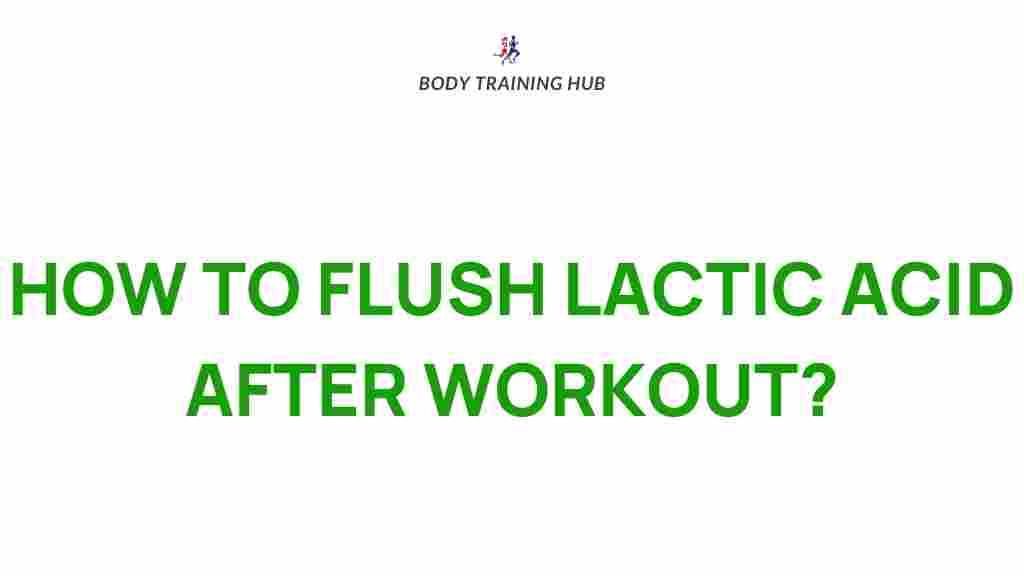Introduction: After an intense workout, you may experience a burning sensation in your muscles or delayed-onset muscle soreness (DOMS). These are often linked to the buildup of lactic acid, a byproduct of anaerobic metabolism. While this is a natural process, understanding how to manage and eliminate lactic acid can significantly improve your recovery and overall performance.
What is Lactic Acid and How Does it Affect Your Body?
Lactic acid is a compound that forms when your body breaks down glucose for energy during intense physical activity. It accumulates when oxygen levels are insufficient for complete breakdown, leading to the familiar muscle fatigue and discomfort.
While lactic acid is not inherently harmful, excessive accumulation can lead to temporary soreness and reduced performance. Fortunately, your body naturally clears lactic acid post-workout, but there are strategies to speed up this process.
How to Eliminate Lactic Acid Post-Workout
To enhance recovery and minimize soreness, follow these proven techniques to effectively eliminate lactic acid:
1. Engage in a Cool-Down Routine
A proper cool-down session promotes circulation and helps flush out lactic acid. Include the following:
- Light cardio, such as walking or cycling, for 5-10 minutes post-workout.
- Dynamic stretches to maintain mobility and relax tense muscles.
2. Stay Hydrated
Water plays a crucial role in transporting lactic acid out of the muscles. To optimize hydration:
- Drink water before, during, and after your workout.
- Consider electrolyte-infused beverages for prolonged or intense sessions.
3. Incorporate Active Recovery
Low-intensity exercises, like yoga, swimming, or a leisurely bike ride, can enhance circulation and reduce lactic acid buildup.
4. Use Massage or Foam Rolling
Massages and foam rolling are excellent for releasing muscle tension and improving blood flow. This helps accelerate lactic acid removal and alleviates muscle soreness.
5. Optimize Nutrition
Consuming the right nutrients supports muscle repair and recovery:
- Proteins to rebuild muscle fibers.
- Carbohydrates to replenish glycogen stores.
- Antioxidant-rich foods like berries and leafy greens to combat inflammation.
6. Prioritize Rest and Sleep
Quality sleep is essential for muscle recovery and lactic acid clearance. Aim for 7-9 hours per night to maximize the benefits.
Common Mistakes When Addressing Lactic Acid
While eliminating lactic acid is straightforward, there are pitfalls to avoid:
- Skipping the cool-down: Neglecting this step can prolong recovery.
- Overworking sore muscles: Pushing through soreness may lead to injuries.
- Ignoring hydration: Dehydration slows lactic acid clearance.
Troubleshooting Tips for Persistent Muscle Soreness
If soreness persists despite these methods, consider the following:
1. Evaluate Workout Intensity
Ensure your workouts align with your fitness level to prevent overtraining.
2. Consult a Professional
For recurring or severe discomfort, consult a physiotherapist or sports doctor to rule out injuries.
3. Consider Supplementation
Supplements like branched-chain amino acids (BCAAs) or magnesium may aid recovery. However, always consult a healthcare professional before use.
Benefits of Lactic Acid Management
Efficient lactic acid elimination offers several advantages:
- Reduced muscle soreness and fatigue.
- Improved recovery time between workouts.
- Enhanced athletic performance.
For more insights into optimizing your workout recovery, check out our related guide on fitness nutrition.
Conclusion
Understanding and implementing strategies to eliminate lactic acid after exercise is key to maximizing recovery and sustaining performance. By incorporating techniques like hydration, proper nutrition, and active recovery into your routine, you can reduce soreness and boost your fitness journey.
For additional resources on lactic acid and recovery science, explore this comprehensive external resource for detailed insights.
This article is in the category Strength & Recovery and created by BodyTraining Team
